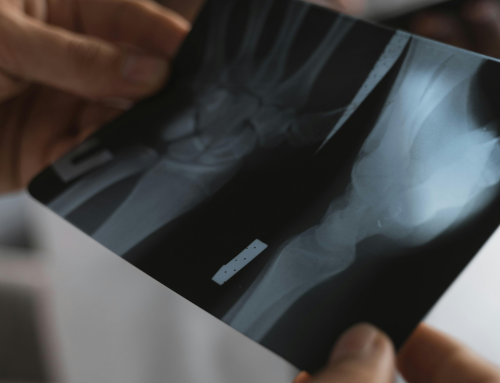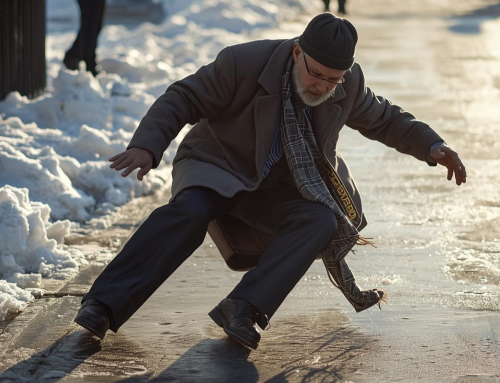Injuries can occur whether you’re a weekend warrior, an elite athlete, or just navigating the perils of everyday life. When they do, it’s crucial to understand what you’re dealing with. One common question many people face is: “Is my bone broken or sprained?” Distinguishing between a bone fracture and a sprain can be challenging, as they often share similar symptoms. In this article, we’ll shed light on how to identify the differences and when to seek professional help.

Defining Fractures and Sprains
Before diving into the telltale signs of a fracture or sprain, let's first define what these injuries are:
Bone Fractures
A bone fracture occurs when there's a break or crack in a bone, often resulting from a high-force impact or stress. Fractures can range from a thin crack to a complete break that causes the bone to separate into two or more pieces.
If you’ve sustained an open fracture or compound fracture, it means the bone has broken through the skin due to the break. A simple or “closed” fracture is when the bone breaks but doesn’t pierce the skin.
Sprains
On the other hand, a sprain refers to an injury to a ligament, the part of your body that connect bones to other bones. Sprains often occur due to overstretching or tearing of ligaments, typically from falls, twists, or blows to the body.
Differentiating Between a Fracture and a Sprain
When an injury occurs, it can be tough to tell if you’re experiencing the pain of a break or sprain. Here are a few ways you can determine the type of injury you’ve sustained.
Pain
Pain is a common symptom of both fractures and sprains, but the nature and location of the pain can often provide clues. Fracture pain is usually sharp and intense immediately after the injury, and it's typically localized to the area directly over the broken bone. Sprain pain, while it can also be severe, is often more diffused around a joint and may worsen when you try to move or use the joint.
Swelling or Bruising
Both fractures and sprains can cause swelling and bruising. However, fractures tend to cause more significant and immediate swelling at the injury site compared to sprains. Bruising usually appears within a day in both cases but may cover a larger area in the case of a sprain.
Deformity
An obvious deformity, like a bone protruding from the skin or a limb looking out of place, typically indicates a fracture. Sprains, on the other hand, don't cause deformity, but the injured area may look different due to swelling or bruising.
Movement and Weight Bearing
In general, it's usually impossible to move or put weight on a fractured bone without severe pain. Sprains can also make movement and weight-bearing painful, but it's often still possible to a certain degree.
Sound at the Time of Injury
Sometimes, the sound made at the time of injury can provide a clue. A fracture often comes with a crack or snap sound, while a sprain might produce a pop or tearing sound.
When to Seek Medical Help
It's crucial to seek medical attention if you suspect a fracture or a severe sprain, especially if you're experiencing severe pain, swelling, can't move or bear weight on the injured area, or see a visible deformity. Remember, only a healthcare professional can definitively diagnose a fracture or sprain, usually through physical examination and imaging tests such as X-rays, MRIs or Ultrasound.
Prevention is Key
While it's crucial to recognize whether you've suffered a sprain or fracture, it's even more critical to prevent these injuries in the first place. Regular exercise, a balanced diet rich in bone-healthy nutrients, and practicing safe and correct techniques during physical activities can go a long way in keeping your bones and ligaments strong and resilient.
Understanding the difference between a sprain and a fracture is essential for proper initial treatment and can direct you to the right course of action. Remember, however, this guide should not replace a consultation with a healthcare professional. If in doubt, always seek medical attention.
Once diagnosed, follow your healthcare provider's treatment plan diligently—whether it includes rest, physical therapy, medication, or in some cases, surgery. Recovery times can vary based on the nature of the injury, your overall health, and how well you adhere to the treatment plan.
One method that could accelerate your healing process is introducing your bones to a low-intensity pulsed ultrasound device. By stimulating your bones with this painless mechanical force, cell reproduction and protein expression enhance cellular behaviour at the fracture site. This can help your fracture heal by 86%.
Finally, don't neglect the importance of rehabilitation and a gradual return to activity. Reinjury can occur if you rush back into regular activities without giving your body a chance to heal fully. To find out more about the device that can help heal your fracture 38% faster, contact Fracture Healing.
Ultimately, our bodies are remarkably resilient, and with the proper care and treatment, most fractures and sprains can heal effectively. Stay informed about your health, listen to your body, and maintain a proactive attitude toward injury prevention.
Have you ever experienced a sprain? Did you wonder if it was broken? Share your experience with our readers in the comments below.





